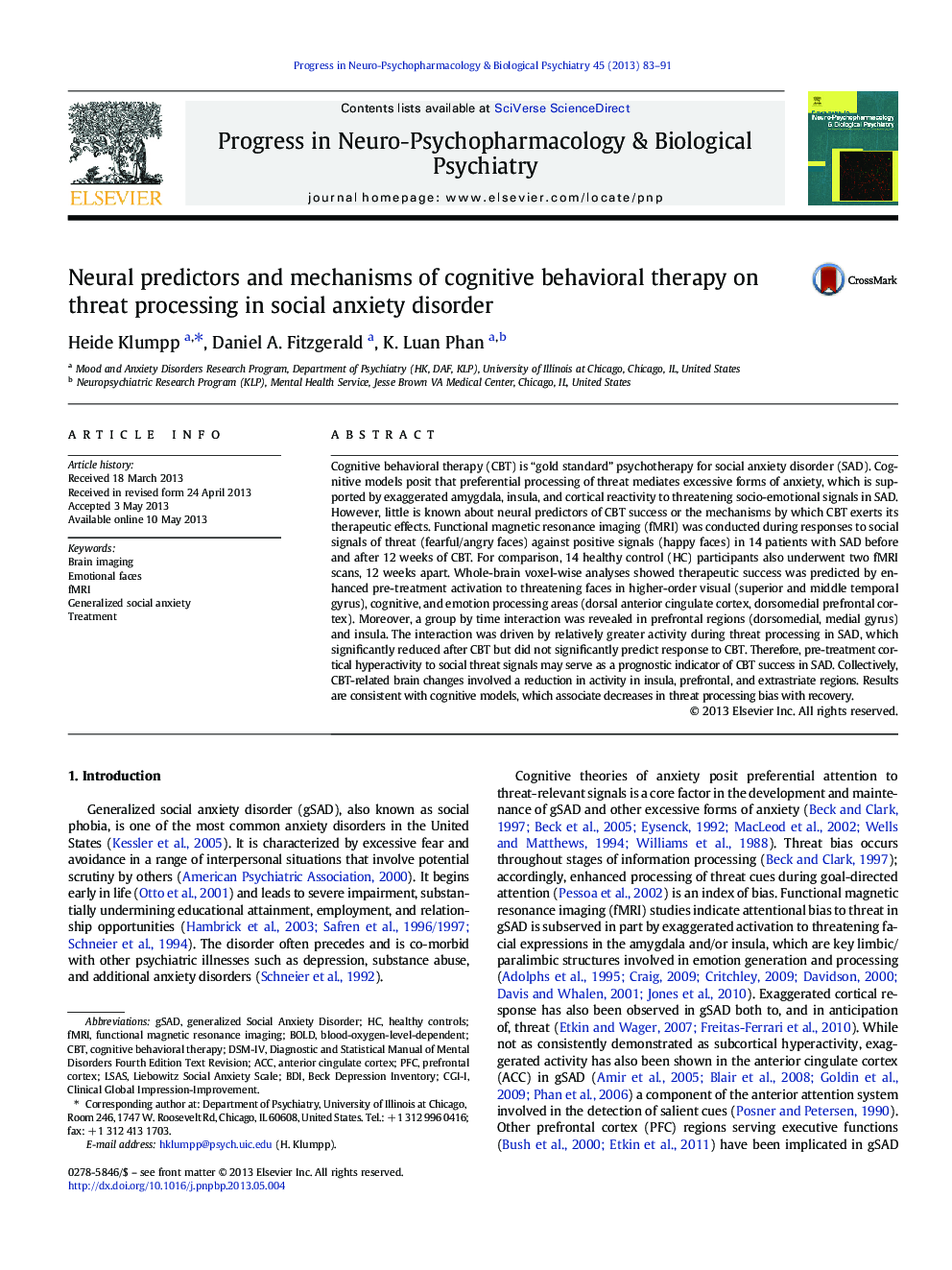| کد مقاله | کد نشریه | سال انتشار | مقاله انگلیسی | نسخه تمام متن |
|---|---|---|---|---|
| 5844798 | 1561049 | 2013 | 9 صفحه PDF | دانلود رایگان |
- Cognitive behavioral therapy (CBT) is a common psychotherapy for anxiety disorders
- Baseline activity in visual, emotion, and cognitive areas correlated with CBT success
- CBT-related changes included decreases in emotion processing and regulatory regions
Cognitive behavioral therapy (CBT) is “gold standard” psychotherapy for social anxiety disorder (SAD). Cognitive models posit that preferential processing of threat mediates excessive forms of anxiety, which is supported by exaggerated amygdala, insula, and cortical reactivity to threatening socio-emotional signals in SAD. However, little is known about neural predictors of CBT success or the mechanisms by which CBT exerts its therapeutic effects. Functional magnetic resonance imaging (fMRI) was conducted during responses to social signals of threat (fearful/angry faces) against positive signals (happy faces) in 14 patients with SAD before and after 12Â weeks of CBT. For comparison, 14 healthy control (HC) participants also underwent two fMRI scans, 12Â weeks apart. Whole-brain voxel-wise analyses showed therapeutic success was predicted by enhanced pre-treatment activation to threatening faces in higher-order visual (superior and middle temporal gyrus), cognitive, and emotion processing areas (dorsal anterior cingulate cortex, dorsomedial prefrontal cortex). Moreover, a group by time interaction was revealed in prefrontal regions (dorsomedial, medial gyrus) and insula. The interaction was driven by relatively greater activity during threat processing in SAD, which significantly reduced after CBT but did not significantly predict response to CBT. Therefore, pre-treatment cortical hyperactivity to social threat signals may serve as a prognostic indicator of CBT success in SAD. Collectively, CBT-related brain changes involved a reduction in activity in insula, prefrontal, and extrastriate regions. Results are consistent with cognitive models, which associate decreases in threat processing bias with recovery.
Journal: Progress in Neuro-Psychopharmacology and Biological Psychiatry - Volume 45, 1 August 2013, Pages 83-91
